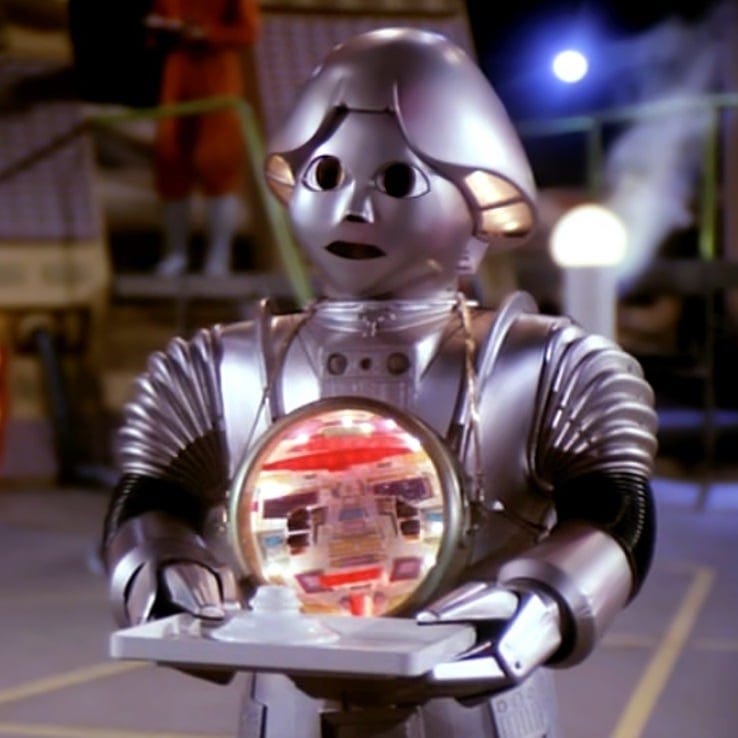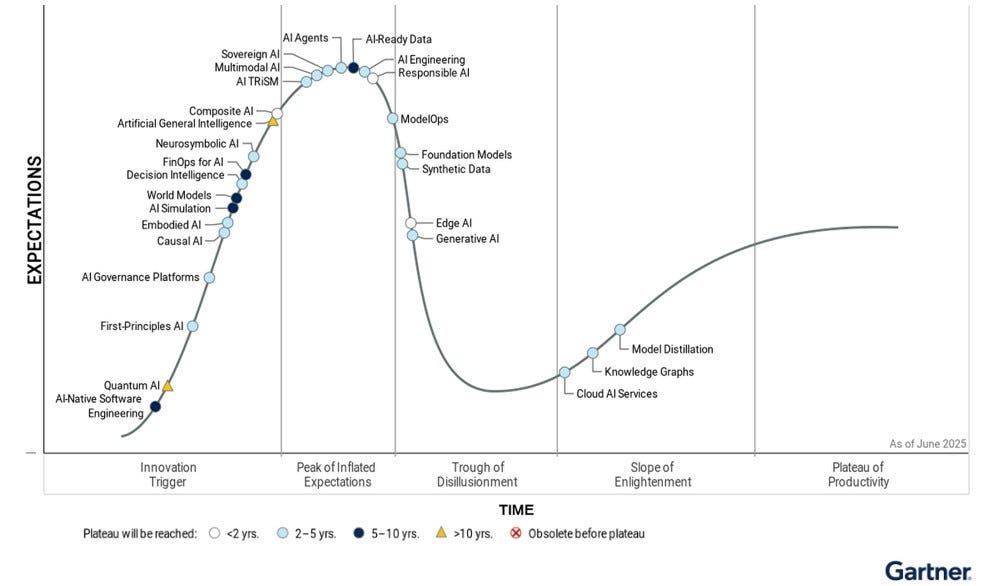Robots Don't Live by Our Rules
Both robotics and AI fail when they imitate humans—real breakthroughs come from designing for purpose, not replication.
The pup and I went out hiking the ridges above Encinitas last weekend. We both needed to shake off the week and clear our heads. I can’t speak for her, but I found myself thinking about robots. Specifically, the practice of trying to recreate humans in metal and wire.
I know why this topic was bouncing around in my head. The day before, I had listened to Elon Musk on the All-In Podcast talking about Optimus, his humanoid robot project. There was one part I couldn’t get out of my mind. On being asked questions about the difficulty of creating a humanoid robot, he was heard to confess: “Hands are the hard part.”
Hey, wow, no kidding?
Millions of years of evolution produced our bodies, our balance, our brains, our butts, and—above all—our hands. Hands that can thread a needle, crush a rock, whang on a guitar...and sense texture at the molecular level. And yet, many roboticists keep chasing the fantasy of “humanoid replicants”: two arms, five fingers, two legs. As if the human form is a gold standard which can be achieved.
I looked down at the pup and said, “If you’re trying to make a machine match the dexterity of a human hand, you’re chasing the wrong problem.”
“Woof,” she said.
Rodney Brooks said it better than I could
In his piece, Why Today’s Humanoids Won’t Learn Dexterity, robotics pioneer Rodney Brooks lays it out: our world is built around human limbs, forcing robots to play by our rules is the wrong game entirely.
The smarter move is building purpose-designed robots that outperform humans at specific tasks, not cosplay as humans. Four-legged carriers. Soft-grip harvesters. Drone swarms. Machines that don’t need hands at all.
“If you force robots to live by our rules, they’ll always play catch-up.”
The same trap shows up in AI use cases
This is where it all clicked for me: the same flawed thinking infects AI adoption. Most teams approach AI like roboticists approach humanoids:
“Let’s replace this process with AI.”
“Let’s bolt AI onto this workflow.”
“Let’s recreate the human hand rather than rethink the crux of our challenge.”
It feels safe, but it’s cosmetic. A chatbot here, an auto-summary there. This all misses the real opportunity of re-architecting systems, re-imagining processes, and ultimately empowering AI to make bounded decisions.
It’s also why so many teams struggle with AI. Not because the technology isn’t ready, but because the use cases are too small. They think about routing tickets instead of orchestrating resilience. They think about summarizing data instead of integrating decisions across systems.
I’m sounding like a broken record. I’m sure there’s an AI Agent for that.1
Enter Gartner’s Hype Cycle
Look at Gartner’s 2025 Hype Cycle for AI. Generative AI is sliding into the Trough of Disillusionment. AI Agents, data foundations, and orchestration are bubbling toward the peak.
Translation: the showy demos are giving way to the hard, unglamorous work of plumbing—governance, integration, data readiness, agentic orchestration.
That’s where the real winners will emerge.
Build purpose, not puppets
Here’s where I end up. Avoiding the traps of rote replicating, of siloing usage, and of ignoring the plumbing.
Start with outcomes, not imitations. Don’t copy humans—design for machines.
Redesign the environment. Create workflows that suit AI/robots, not legacy constraints.
Integrate and orchestrate. Use AI across systems; don’t bolt it on.
Move from suggest → decide → act. That’s where value scales.
Get the foundations right. Data, governance, observability—this is the real moat.
The Ridge, the Hands, the Lesson
When I was up on the top of that ridge, thinking, I took a look at my hands. There I saw scars, calluses, crooked fingers from years of guitar bends. I thought to myself: no machine is ever going to match this messy biology.
And why should it? The whole point of machines—whether robots or AI—is to do what we can’t, not chase our shadows.
Copying the human template is a sucker’s bet. Redefining the game is where the real action is.
In fact, there is. Tools like iZotope RX or AI-based remastering can separate instruments/vocals and rebuild a clean track.






Hey Wally this was a great read. While I agree that creating specifically purposed robots/machines/AI will achieve scale and speed, a part of me struggle with these thoughts:
- does creating/designing robots/AI to for specific purpose remove humans from that purpose ? Therefore fast forward to the future, will this dependence cause a subsequent downfall of human independence in life ?
- does building specific purpose robots/AI mean removing the need for humans to perform the same task that a robot can do? For example, no more stoves since the robot can create food from a replicator that an ordinary human does not know how to repair if broken. When a farm machine breaks down today: 1) we know how to fix it 2) we can always scale back to human farming because the machines mimic human process.
When we make robot hands that perform as well as human hands, aren't we just keeping the human hand as a relevant tool going forward, preserving the thousands of years our environment and our hands have evolved to exist together?
Cheers!
David